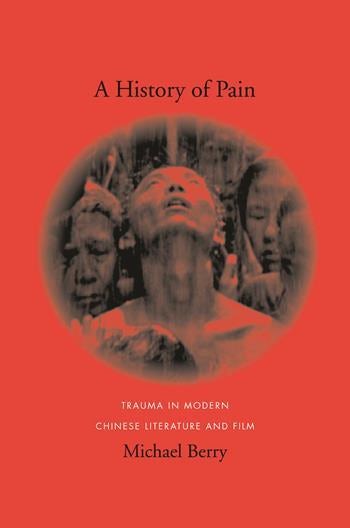The portrayal of historical atrocity in fiction, film, and popular culture can reveal much about the function of individual memory and the shifting status of national identity. In the context of Chinese culture, films such as Hou Hsiao-hsien's City of Sadness and Lou Ye's Summer Palace and novels such as Ye Zhaoyan's Nanjing 1937: A Love Story and Wang Xiaobo's The Golden Age collectively reimagine past horrors and give rise to new historical narratives.
Michael Berry takes an innovative look at the representation of six specific historical traumas in modern Chinese history: the Musha Incident (1930); the Rape of Nanjing (1937-38); the February 28 Incident (1947); the Cultural Revolution (1966-76); Tiananmen Square (1989); and the Handover of Hong Kong (1997). He identifies two primary modes of restaging historical violence: centripetal trauma, or violence inflicted from the outside that inspires a reexamination of the Chinese nation, and centrifugal trauma, which, originating from within, inspires traumatic narratives that are projected out onto a transnational vision of global dreams and, sometimes, nightmares.
These modes allow Berry to connect portrayals of mass violence to ideas of modernity and the nation. He also illuminates the relationship between historical atrocity on a national scale and the pain experienced by the individual; the function of film and literature as historical testimony; the intersection between politics and art, history and memory; and the particular advantages of modern media, which have found new means of narrating the burden of historical violence.
As Chinese artists began to probe previously taboo aspects of their nation's history in the final decades of the twentieth century, they created texts that prefigured, echoed, or subverted social, political, and cultural trends. A History of Pain acknowledges the far-reaching influence of this art and addresses its profound role in shaping the public imagination and conception-as well as misconception-of modern Chinese history.
- Contents
- Acknowledgments
- Introduction
- Prelude: A History of Pain
- Wu Jianren’s History of Pain
- Lu Xun and Modern Chinese Literature’s Genealogy of Violence
- Chen Chieh- jen’s Lingchi and the Dissection of History
- PART ONE: Centripetal Trauma
- 1. Musha 1930
- Enter the Headhunt
- Appropriating Musha: Chinese and Taiwanese Interventions
- Simplifying History? The Musha Incident in Pop u lar Culture
- Heavy Metal Headhunt: ChthoniC and the Colonizationof Historical Memory
- 2. Nanjing 1937
- Mapping the Site
- Three Cinematic Visions of Nanjing 1937: Luo Guanqun,T. F. Mou, and Wu Ziniu
- Writing the Nanjing Massacre: Ah Long and Ye Zhaoyan
- Facts and Fictions: From Qixia Temple 1937 to May & August
- 3. Taipei 1947
- Memories Forgotten
- Writing 2/28: The Fictional Legacy of the February Uprising
- Screening 2/28: From a City of Sadness to a March of Happiness
- Rewriting 2/28: Old Obsessions and New Investigations
- PART TWO: Centrifugal Trauma
- 4. Yunnan 1968
- An Education in Violence
- Wang Xiaobo’s Golden Age of the Cultural Revolution
- Cultural Refractions: Ah Cheng from Fiction to Film
- Serialized Returns: Back to Shanghai and Off to “Haiwai”
- 5. Beijing 1989
- Imaginary Massacre
- Sexing Tiananmen: Hong Ying and Beijing Comrade
- Fleeting Images: Tiananmen Square on (and off) Screen
- Belated Tragedies and the Transnational Imagination:Terrence Chang and Gu Zhaosen
- Coda: Hong Kong 1997
- Anticipatory Trauma
- Conclusion
- Bibliography
- Filmography
- Index

